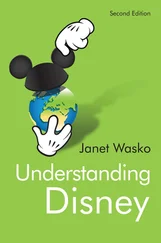This is not to say that someone who has had an enduring lack of desire for all forms of sexual activities, including partnered sex and masturbation, should not be labeled asexual. They should, in my view. This is because, as mentioned above, this person would lack sexual attraction for others (although perhaps not lack romantic attraction), along with lacking additional sexual processes (e.g., no sex drive). In fact, using an enduring lack of sexual desire for all sexual activities is, perhaps, a more stringent definition of asexuality than the one I have proposed, because it would include a lack of sexual attraction and a lack of sex drive. Thus, a lack of sexual attraction may be construed as a “minimal” definition for asexuality.
A couple of miscellaneous factors remain. One concerns sexual identity. Why not define an asexual person as anyone who, in fact, defines himself or herself as asexual? This is a reasonable question, and self-definitions/identities are important in a number of ways. For one, considering self-definitions respects the way someone chooses to label him or herself. There are also many interesting research and health issues about forging a sexual identity, including an asexual identity, as we will discuss in chapter 7. But is self-definition the best way to understand the main factor(s) underlying asexuality as a sexual orientation and/or as a phenomenon? Because one’s sexual identity is often formed by a variety of factors—such as knowledge of a label or labels, comfort level with coming out, and political and other factors—many sexologists, including myself, are often wary of using self-identification as the key dimension in defining sexual orientation. [11] This is true especially if you consider the various names people use to describe their identity if they have same-sex attractions: gay, lesbian, queer, butch, femme, queen, and so forth.
As mentioned above, many sexologists define sexual orientation in terms of sexual attraction, as we believe it is the “psychological core” of sexual orientation.
Another miscellaneous factor is pleasure. When we think of sex, we may think of sexual attractions, arousal, and desire, but we also think of pleasure. And when we do think of the pleasures of sex, we usually associate it with the arousal aspect (e.g., feelings of pleasure associated with erections and vaginal lubrication and the intense pleasure when physical arousal culminates in an orgasm). This makes sense because the organs of sex most directly associated with physical arousal (i.e., penis, clitoris, vagina) are brimming with nerve endings, which ultimately connect to the pleasure centers of the brain that are capable of making us experience intense pleasure. But all aspects of the sexual experience, broadly defined (including attraction, behavior, and desire), elicit a certain amount of pleasure. For example, a heterosexual man may experience pleasure at the mere sight of a beautiful woman (attraction) without ever—alas!—experiencing the physical pleasures (arousal/orgasm) of sex with her.
You may be thinking that this discussion on sexual pleasure is interesting, but also wondering, yet again, what all of this has to do with asexuality. Do asexual people lack sexual pleasure, and with all aspects of sex? It is likely the case that some asexual people may not have pleasure with many, if not all, aspects of sex, but a lack of pleasure does not seem to be the key defining factor associated with asexuality. Some asexual people do, for example, have arousal experiences and evidently receive pleasure from these experiences, as one of the quotes above, repeated here, demonstrates: “everything works fine, pleasurable and all, it’s just not actually attracted to anything” (Brotto et al., 2010, p. 612). How many asexual people do nonetheless receive some level of pleasure from their arousal is unknown, but it is clear that a lack of sexual pleasure is not a defining feature for all asexual people.
In this chapter we discussed the A ( attraction and arousal ), B ( behavior ), C ( cognition ), and Ds ( desire ) of sex. We also mentioned two miscellaneous factors: identity and pleasure. (I realize that by including I and P, I have ruined the alphabetical simplicity of my chapter title!) These are the key psychological processes of sexuality. They also help us to understand asexuality. Indeed, perhaps some asexual people are devoid of all these factors; that is, they lack sexual attraction, arousal, behavior, cognitions (e.g., fantasies), desire, and pleasure, and they also identify as “asexual.” But one of these—lack of sexual attraction—may be a core psychological factor among asexual people and may best define the phenomenon, from both a theoretical and a research perspective. Lack of sexual attraction is at least potentially independent of these other processes, and it is noteworthy that those who lack sexual attraction may not lack these other processes (e.g., desire, arousal). Also, at this point, although lack of sexual attraction seems like a reasonable definition for understanding asexuality, the phenomenon is likely diverse, so it is important to keep in mind that this is a working definition and open to change. Thus, although I give some priority in this book, as I have in my past publications, to defining asexuality as a lack of sexual attraction, I think it is also reasonable to be sensitive to different definitions of asexuality (including a lack of desire for all sexual activities) and self-definitions. Another reason for being open to different definitions is that research on asexuality is just beginning.
The story of life begins asexually, and for most of Earth’s natural history (about two-thirds of it), asexual reproduction has predominated (Cowen, 2005). It has only been in the last twelve hundred million years, out of the thirty-eight hundred million years that life has existed on Earth, that sexual reproduction has flourished—a mere fraction of geological time. Now it is the predominant form of reproduction for species on Earth.
The exact date of the emergence of sex—call it, ahem, the little bang theory—is a bit in question, however. Twelve hundred million years is a ballpark figure, give or take a few hundred million years. The first sex likely occurred in simple organisms, eukaryotes (Cowen, 2005). Eukaryotes are simple single- and multicell organisms, although they are more complex than the first single-cell organisms that predominated for about 2.5 billion years. Eukaryotes owe their complexity to sophisticated structures that the first forms of planetary life did not have, such as nuclei.
There are also other important dates in the evolution of sex beyond its first appearance. A second milestone in the natural history of sex was when this form of reproduction first occurred in the genealogical line leading to modern animals, perhaps about five hundred million years ago. This prize may belong to a worm-like creature called Funisia , the fossilized remains of which were originally found in Australia (Droser & Gehling, 2008). A third milestone was reached when the first “penetrative” sex appeared, around three hundred million years ago in a species of fish. These fossils were also originally found in Australia (Long, Trinajstic, & Johanson, 2009). Evidently, this fish’s pelvic fin was used in penetration during copulation.
Note that not all sex involves penetration/copulation, as the definition of sexual reproduction is the combination of genetic material from two parents to form offspring. Sexual reproduction involves two processes: meiosis, the splitting in half of the parents’ complement of genes, and fertilization, the recombination of genes by the melding of the parents’ gametes (i.e., sperm and egg). Fertilization can be done in a variety of ways, one of which is internal, making penetration a common technique, but there are other ways of achieving this outcome.
Читать дальше












